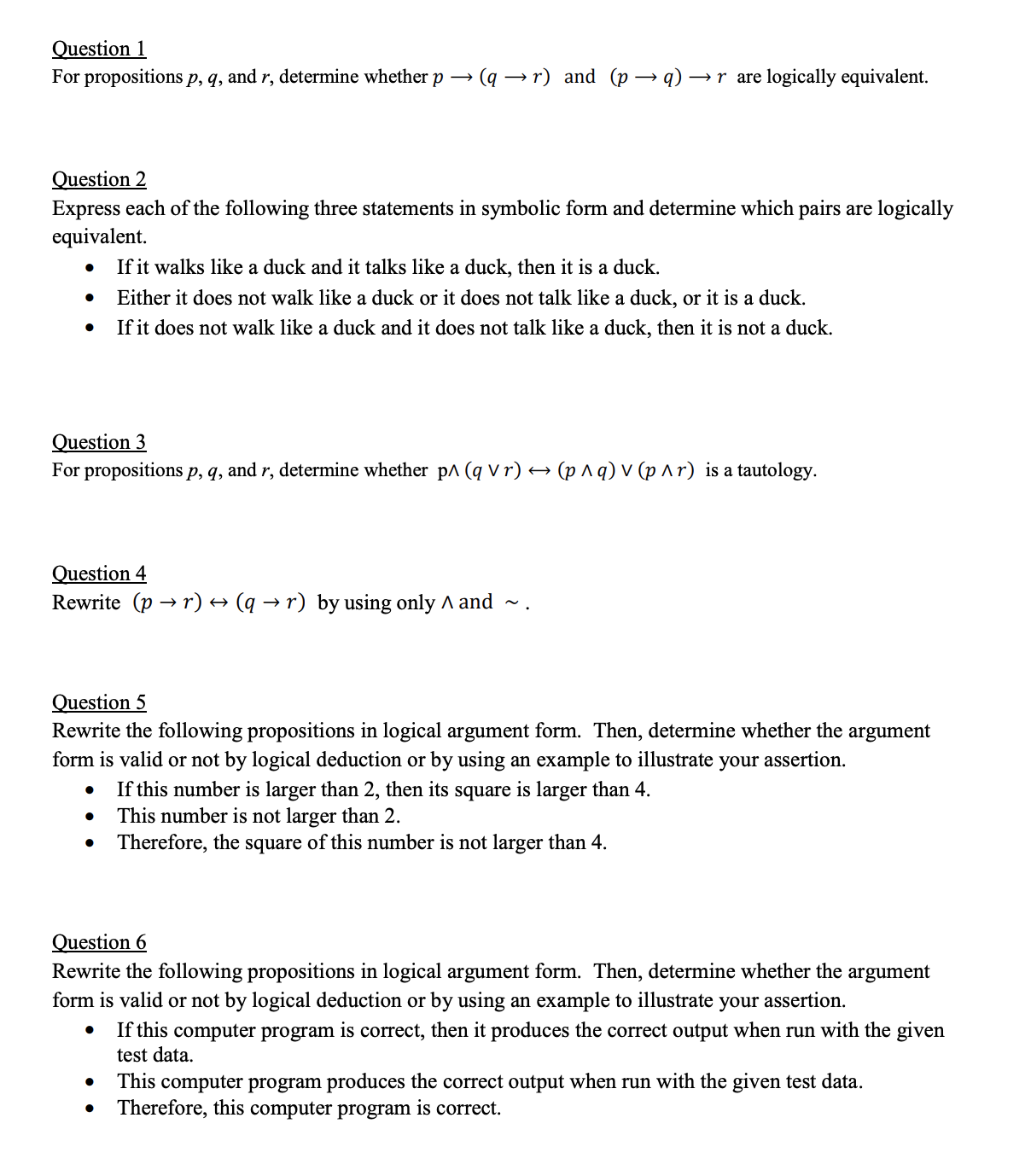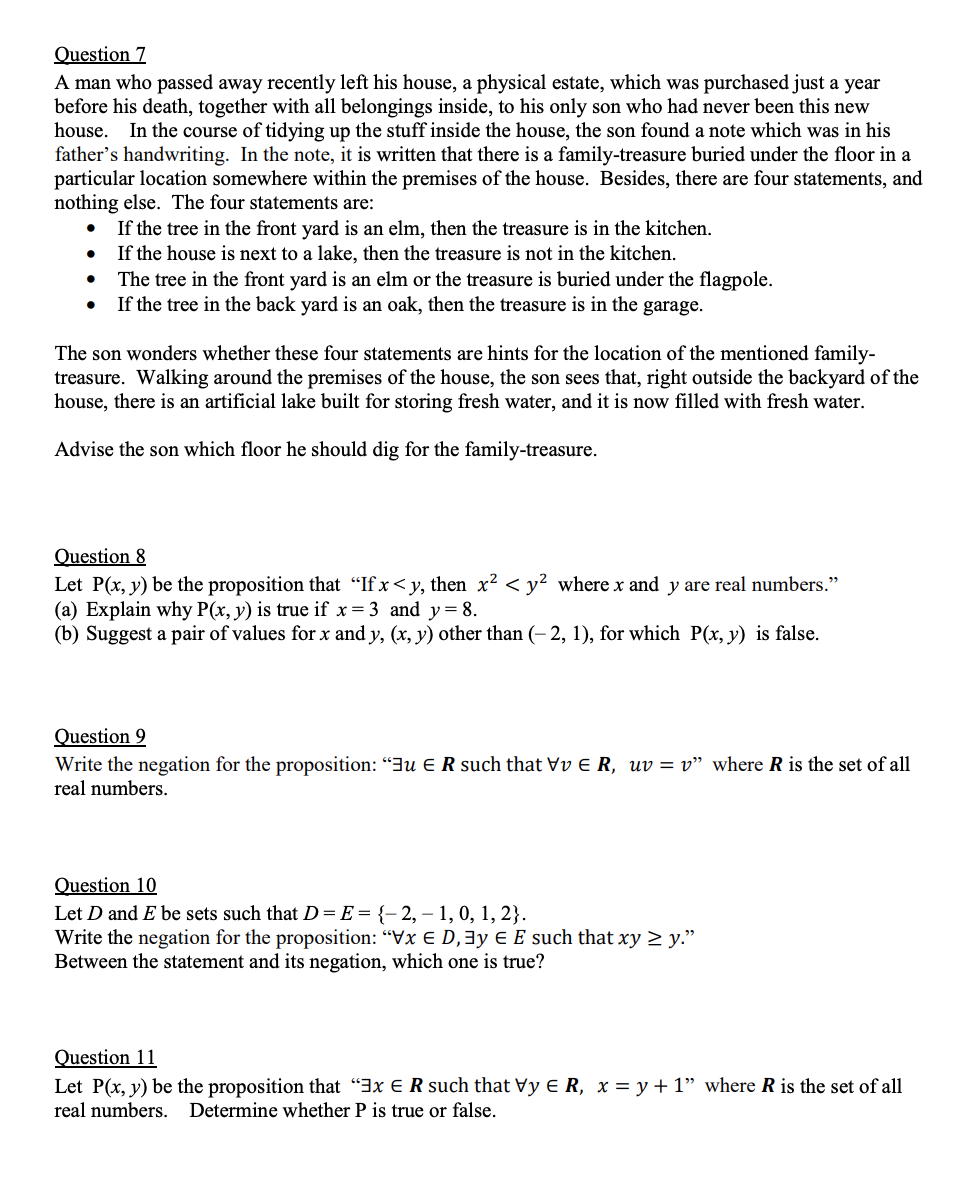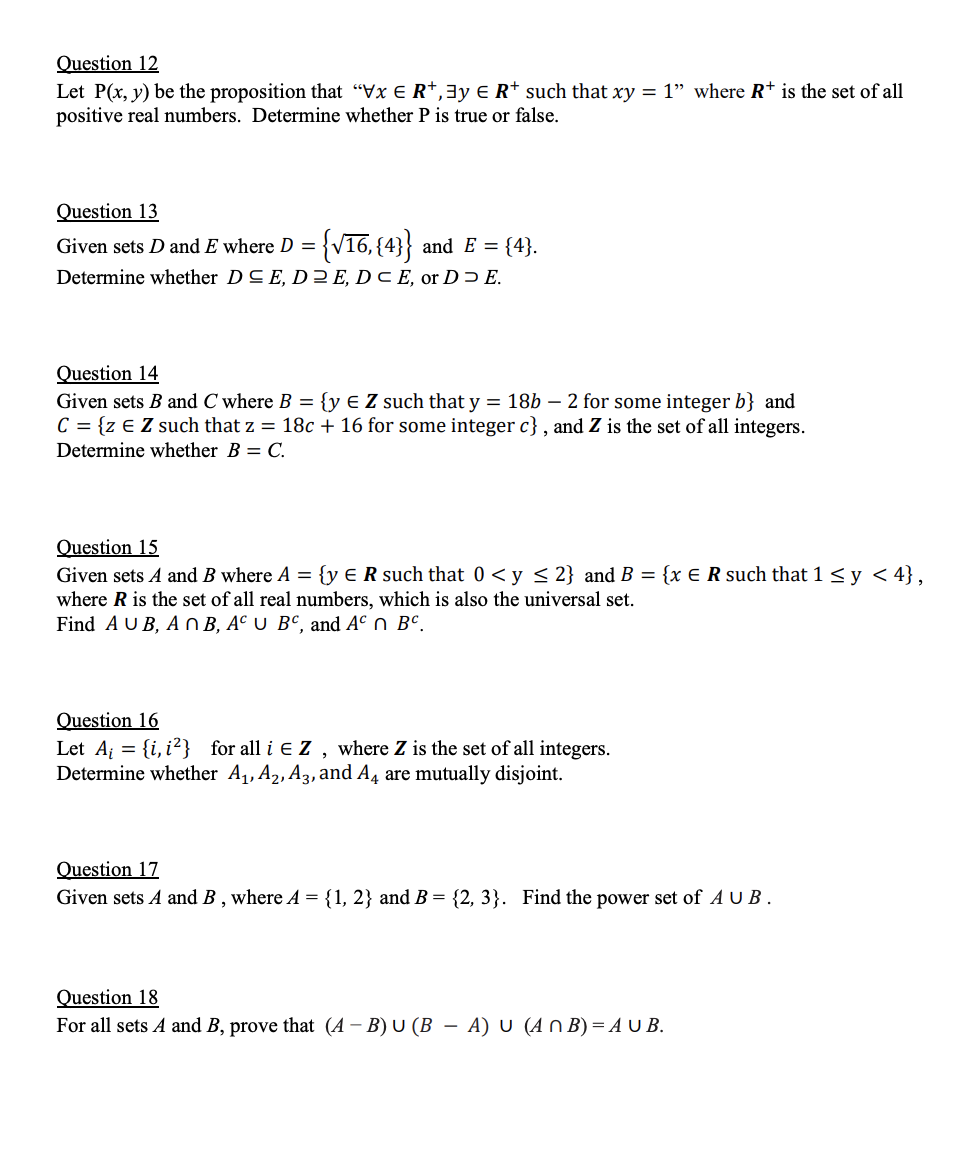discrete maths
Question 1 For propositions p, q, and 1', determine whether p ) (q ) r) and (p ) q) > r are logically equivalent. Question 2 Express each of the following three statements in symbolic form and determine which pairs are logically equivalent. a If it walks like a duck and it talks like a duck, then it is a duck. 0 Either it does not walk like a duck or it does not talk like a duck, or it is a duck. I If it does not walk l(e a duck and it does not talk like a duck, then it is not a duck Question 3 For propositions p, q, and 1', determine whether pA (q V r) (p A q) V (p A r) is a tautology. Question 4 Rewrite (P ' T) H (q -' T) by using only A and ~ . Question 5 Rewrite the following propositions in logical argument form. Then, determine whether the argument form is valid or not by logical deduction or by using an example to illustrate your assertion. - If this number is larger than 2, then its square is larger than 4. a This number is not larger than 2. I Therefore, the square of this number is not larger than 4. Question 6 Rewrite the following propositions in logical argument form. Then, determine whether the argument form is valid or not by logical deduction or by using an example to illustrate your assertion. - If this computer program is correct, then it produces the correct output when run with the given test data. a This computer program produces the correct output when run with the given test data. - Therefore, this computer program is correct. Question 7 A man who passed away recently left his house, a physical estate, which was purchased just a year before his death, together with all belongings inside, to his only son who had never been this new house. In the course of tidying up the stuff inside the house, the son found a note which was in his father's handwriting. In the note, it is written that there is a family-treasure buried under the floor in a particular location somewhere within the premises of the house. Besides, there are four statements, and nothing else. The four statements are: If the tree in the front yard is an elm, then the treasure is in the kitchen. If the house is next to a lake, then the treasure is not in the kitchen. The tree in the front yard is an elm or the treasure is buried under the flagpole. If the tree in the back yard is an oak, then the treasure is in the garage. The son wonders whether these four statements are hints for the location of the mentioned family- treasure. Walking around the premises of the house, the son sees that, right outside the backyard of the house, there is an artificial lake built for storing fresh water, and it is now filled with fresh water. Advise the son which floor he should dig for the family-treasure. Question 8 Let P(x, y) be the proposition that "If x









